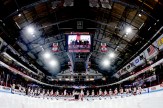She was Northeastern’s first ‘Woman of the Year’
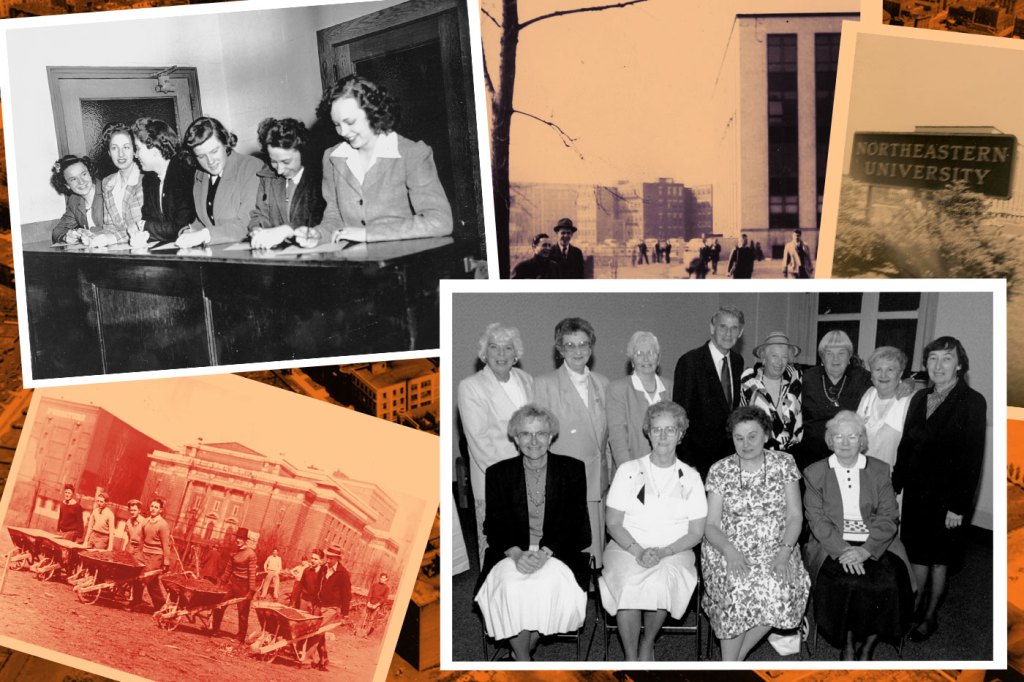
The year was 1943. The U.S. was deep into World War II, with servicemen off fighting in Europe and Asia. Oklahoma! had debuted on Broadway, eventually becoming one of the longest-running and most popular musicals of all time. And Northeastern welcomed its first class of women. Grace McKinlay Mattern was one of a handful enrolled in that class.
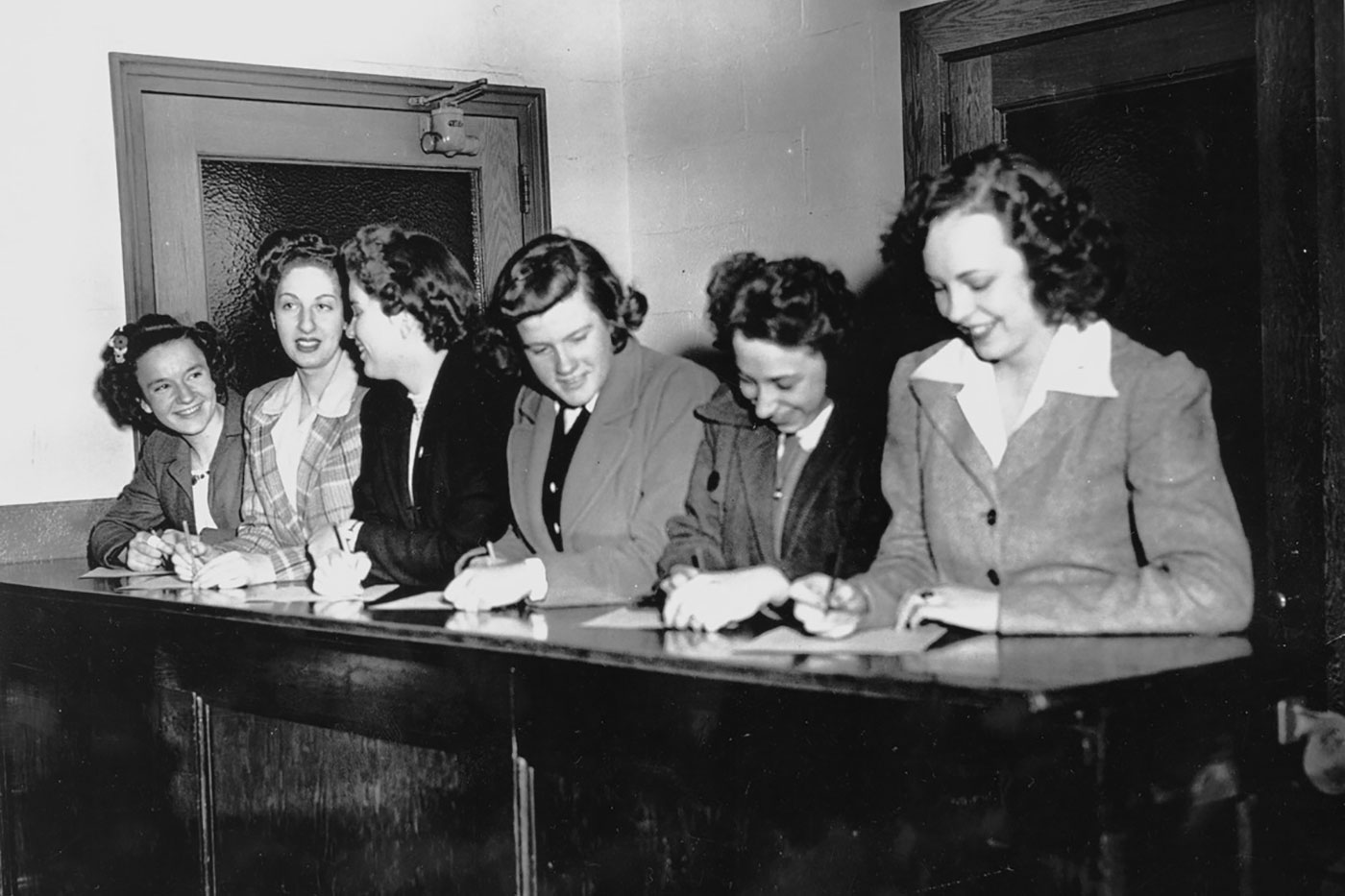
From signing day in 1943, to the 50th anniversary of the first class to admit women, to today, Grace McKinlay Mattern has been a part of the Northeastern community. Photo courtesy of Egan Photo Service/Northeastern University photo collection.
Growing up as one of five children in a family of modest means in Quincy, Massachusetts, Mattern was a standout student and just the sort of scholar the university was recruiting for its inaugural class of women.
“Northeastern was good to me,” recalls Mattern, who studied math, physics, and German. “I’m sure they admitted us women in part because they needed students, but by the same token, we were treated just like the men.”
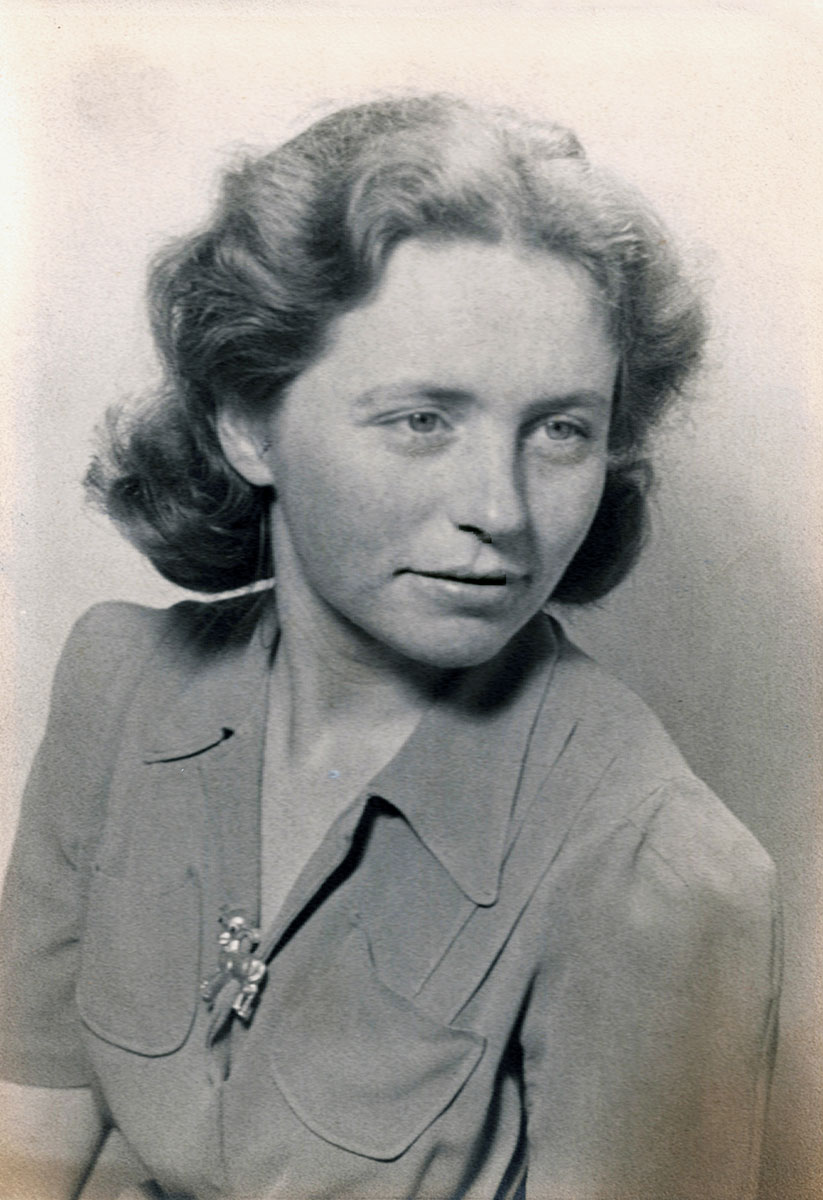
Grace McKinley in 1943. Courtesy photo
An academic trailblazer, Mattern won the very first women’s scholarship at Northeastern and was also named the university’s Woman of the Year—not once, but twice, two years in a row. She made the dean’s list regularly, but was circumspect about her achievements.
One newspaper headline profiling her reads: “‘Woman of the Year’ Not Thrilled.” Another states: “Girl Mathematician Proves Match for Men, Walks off with Top Honors Among Coeds.” Still, she recounts those scholarships made a big difference for her, saying, “I feel lucky I got to stay.”
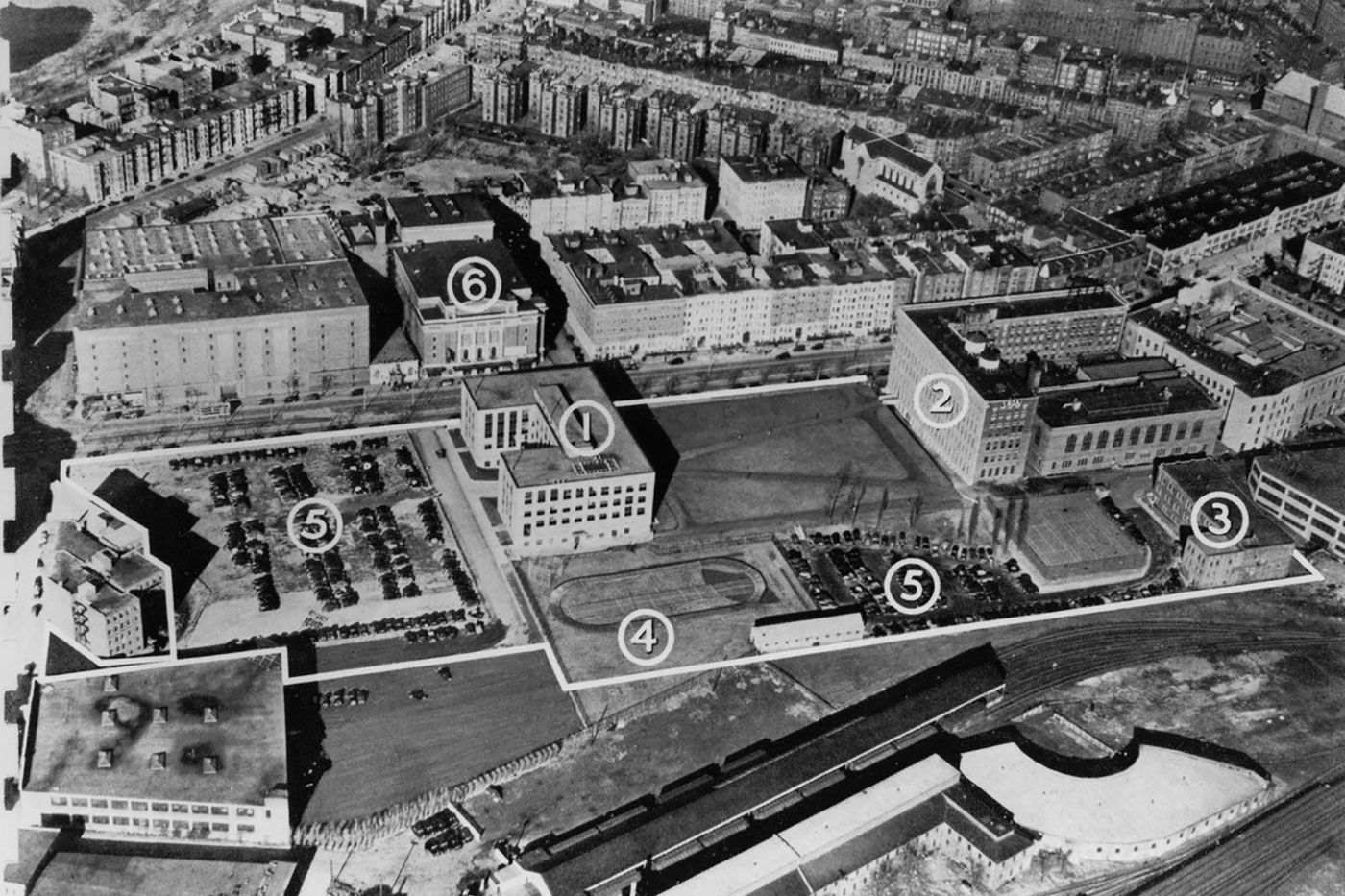
This is how Northeastern’s Boston campus looked circa 1943: (1) West Building (later Richards Hall); (2) YMCA; (3) Botolph; (4) A track on the future site of Hayden Hall (5) parking lots where Ell Center and Cabot Center now stand. Photo courtesy of Jet Commercial Photographers/Northeastern University photo collection.
Mattern cherished her time at Northeastern, saying she benefited from the small classes, which were a consequence of the war. She remembers the professors she had, including Willem Pinard, who later chaired the psychology department at Boston University, and Winthrop Nightingale, the director of the co-op program, after whom Nightingale Hall was named in 1970. In fact, Nightingale taught what Mattern deemed her best class at Northeastern: a compulsory course on how to write a resume.
“I was able to help my friends write their resumes, too, and I did that for years,” she says.
She scored co-ops at Jackson and Moreland Engineering, though she describes her role as more of a gopher when she first started there.
“One time the chief executive had me looking for ripe figs,” she recalls. “I went all over the city, but I didn’t find them.”
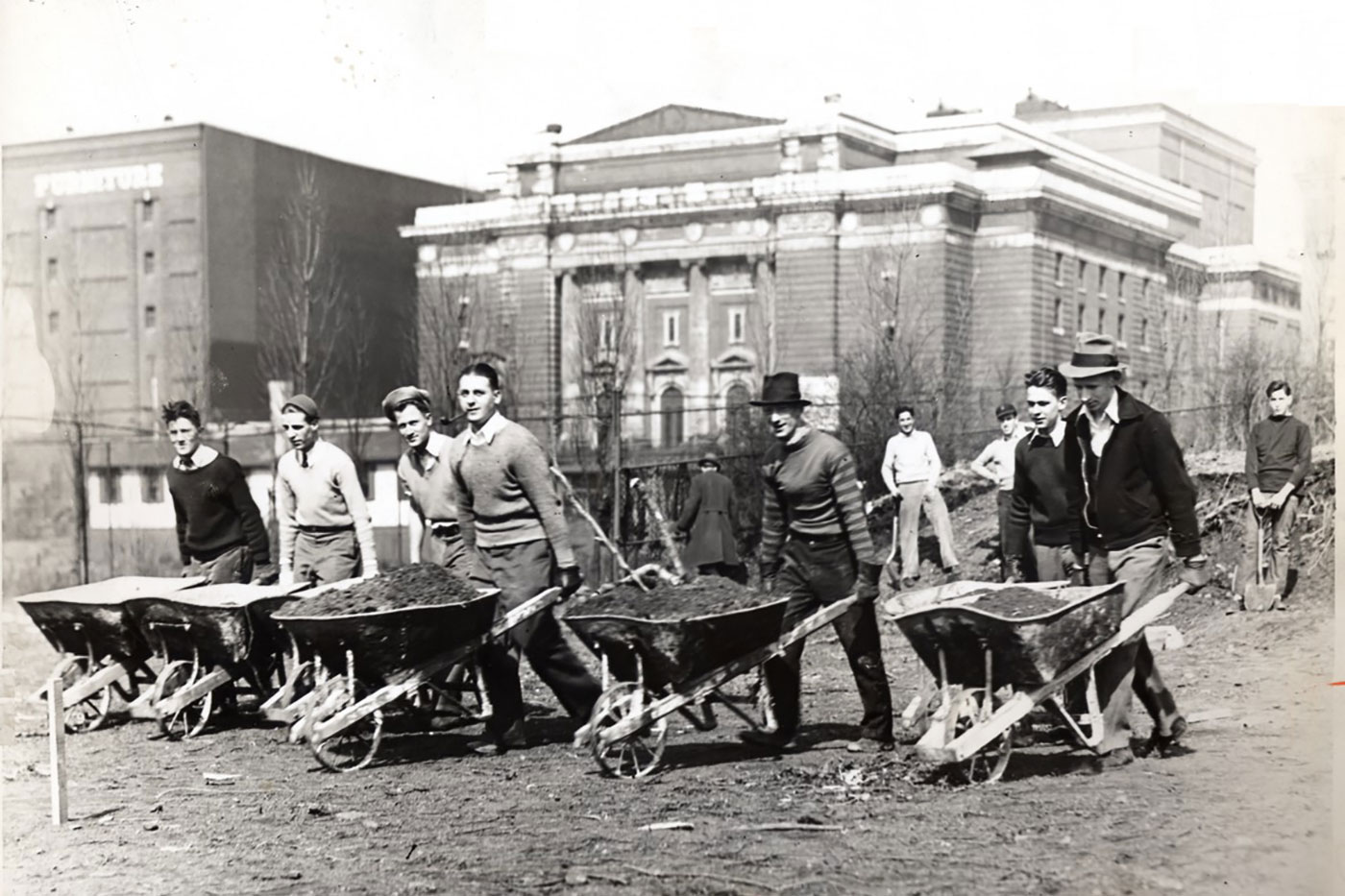
Students push wheelbarrows during the construction of Richards Hall with the Boston Opera House in the background (circa 1940). Photo courtesy of Jet Commercial Photographers/Northeastern University photo collection.
Later, the engineering firm sent her to Draper Laboratory, which during the second world war was known as the Confidential Instrument Development Laboratory for the defense work that was done there.
Across the street from Richards Hall was the Boston Opera House, Mattern remembers. The building was demolished in 1958, and Speare Hall now stands on its former site.
“We were sometimes recruited as extras for the performances,” Mattern says, adding that she and her classmates were paid $1 each time for their part.
A lifelong learner by nature, she returned to learning in her 40s to burnish her education, earning a master’s degree in library science, which enabled her to become a public school librarian. At 57, she went back to her first love, mathematics, becoming a systems analyst at John Hancock Insurance in the 1980s in what was then a male-dominated field.
“The computers took up a whole room then,” she says.
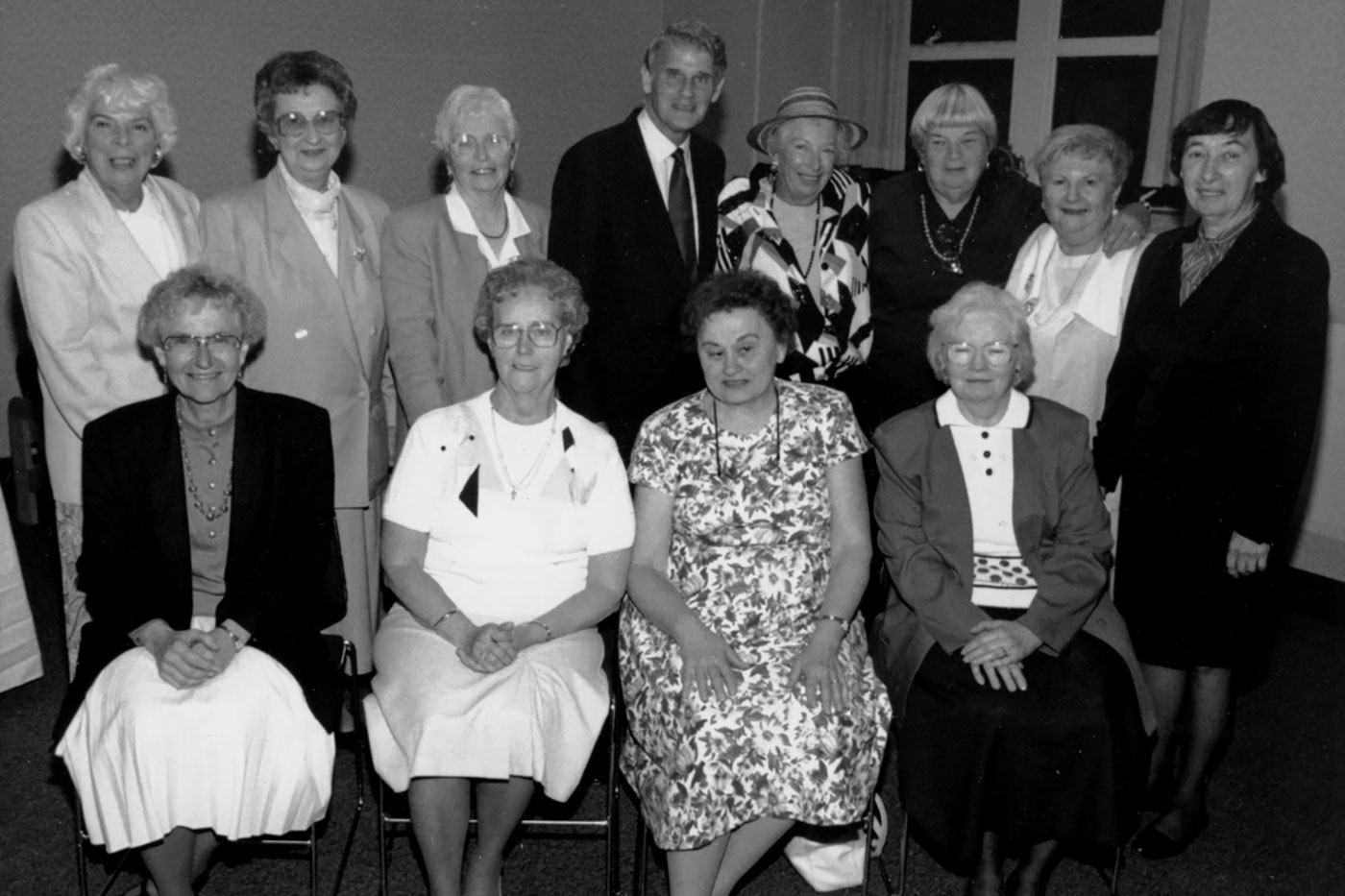
Eleven of the women who were enrolled as undergraduates at Northeastern in 1943 returned to the university for the 50th anniversary of their enrollment. First row, left to right: Stephanie Chopek, Calista Greenough, Ursula Dillon, Lois Nellis. Second row: Virginia Philips, Chessie Kouba, Grace Mattern, University President John Curry, Vivian Friedman, Mary Bigelow, Lillian Stone, Frances Rosen. Photo courtesy of Jet Commercial Photographers/Northeastern University collection.
She retired after seven years, but the company kept her on speed dial, requesting her advice on various initiatives during the next few years.
In 1993, she attended a 50th anniversary celebration of women students at Northeastern, reuniting with her former classmates and rekindling old friendships. They dined with John A. Curry, the former president, and marveled over changes to the campus—or rather, over the fact that there was a campus.
“When we were at Northeastern, there were only two buildings,” she says.
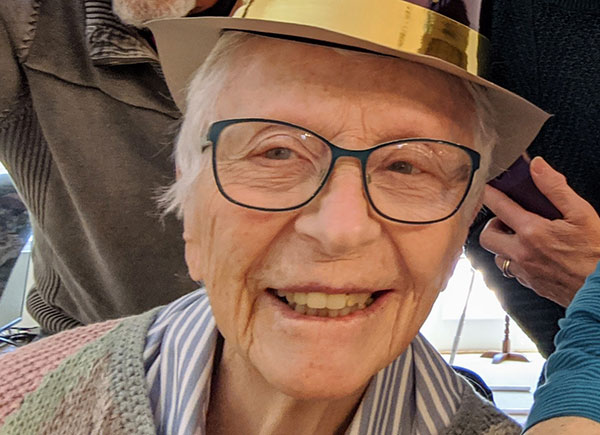
Grace McKinlay Mattern today. Courtesy photo.
Mattern pursued many passions over the years, in addition to raising four daughters and founding a sailmaking business with her husband, Bill Mattern, to whom she has been married for 73 years.
“At the start, I did all the sewing until he went out and bought a machine to sew the sails,” she says.
She was also able to handle the firm’s financials because of her mathematics and business background.
She says she hopes everyone gets a chance to do what they love in life, as she has, and to do as many things as they are passionate about. Another piece of advice from Northeastern’s pioneering female?
“Learn all you can, but also learn to be kind and compassionate,” Mattern says. “That will see you through life.”
For media inquiries, please contact media@northeastern.edu.





